Contemporary India can be bewildering, a place of extremes shot through with contradictions and seemingly changing from week to week. Visitors seeking to negotiate this phenomenally complex country may well find much of what they see makes them uneasy. The juxtapositions of extreme wealth and appalling poverty alongside a liberated young middle class and levels of social repression rarely encountered in the West make a visit to India at once fascinating, challenging, frustrating and disturbing.
Going for growth
As businesses in the West looked to tighten their belts during the financial crisis in 2007–8, India’s highly qualified, but low-salaried workforce became difficult to ignore. Initially seen as a call-centre-based industry, today, across industries like medical reports and pharmaceutical research to IT, India has emerged as a leading player for back-office work and outsourcing. Even so, the falling agricultural and stagnating manufacturing outputs, and a widening of the fiscal deficit in 2011–12, challenged India’s seemingly unstoppable growth, which fell by half from 2010 to 2012. But by 2015 it had increased again to 8.2 percent. While growth may not be as rapid every year, it was still at 7.1 percent in 2018 and forecast to continue growing.
Money and power
Full-blown capitalism is a recent arrival in India. While the country has always had strong mercantile instincts – the Gujaratis in particular are famed for their trading prowess – for many years after Independence the economy followed a nominally state-controlled pattern of development. This was put in place by the socially minded Nehru, whose dream was to see state ownership, industrialisation and an ‘India first’ policy – indigenous production and consumption coupled with protectionist import policies. He also pushed for universal literacy and education, as well as land reform and a redistribution of wealth. In these he was far less successful, and subsequent governments have done little to improve India’s record on human development and sanitation.
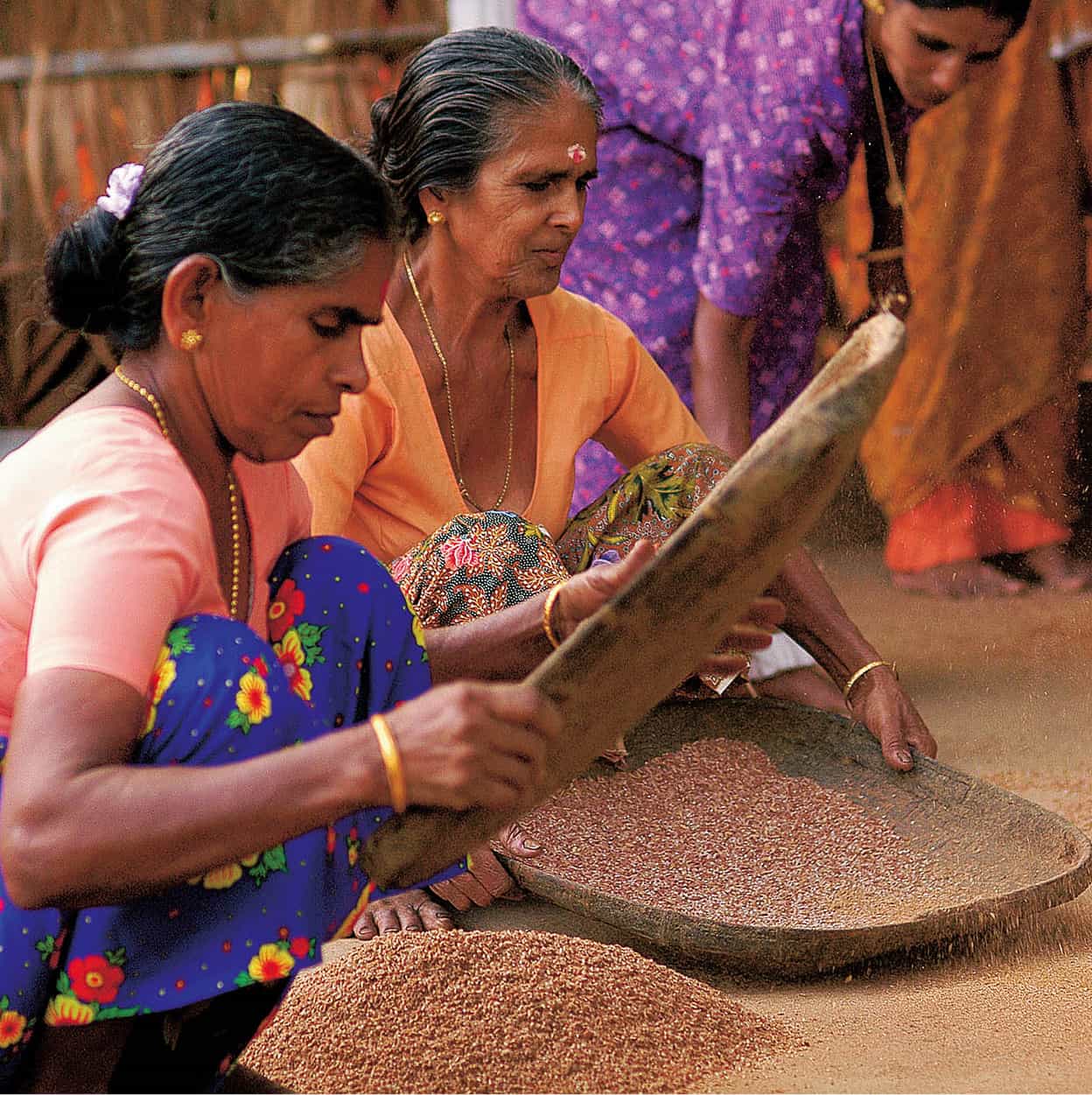
Dehusking rice, a highly labour-intensive process.
Britta Jaschinski/Apa Publications
Recent commentators have tended to denigrate the industrial legacy of Nehru, but they often fail to take into account that at the time of Independence India was in a less than flourishing state; there was hardly any indigenous industry, and literacy rates were exceptionally low. As part of a move towards an increasingly service-based economy, much effort has been expended since the 1990s in undoing the structures put in place by post-Independence Congress governments.
It was Nehru who was largely responsible for pushing through the post-Independence programme of industrialisation, famously claiming that large dams were the ‘temples of modern India’.
Nonetheless, Nehru’s radical solutions to the economic difficulties and fragmented nature of India’s post-colonial society created the very industrial base that many are now so keen to see privatised. The literate workforce from India’s universities that is supposed to take over more service-industry jobs from the West (examples are software industries, some legal positions and call centre work) is, in part, the product of Nehru’s progressive education policies.

A young Indian family.
Britta Jaschinski/Apa Publications
At a governmental level, a huge programme of ‘disinvestment’ (privatisation) has recently been put in place, and inward investment has greatly increased, largely to the benefit of the much-lauded Indian middle class. At the same time, attitudes to social welfare have hardened among policy-makers, with large tax breaks given to the well-off, while the nation’s poor become increasingly marginalised in both the political and economic debate. So far the ‘trickle down’ of wealth has not materialised, and the disparity in income between rich and poor has widened.
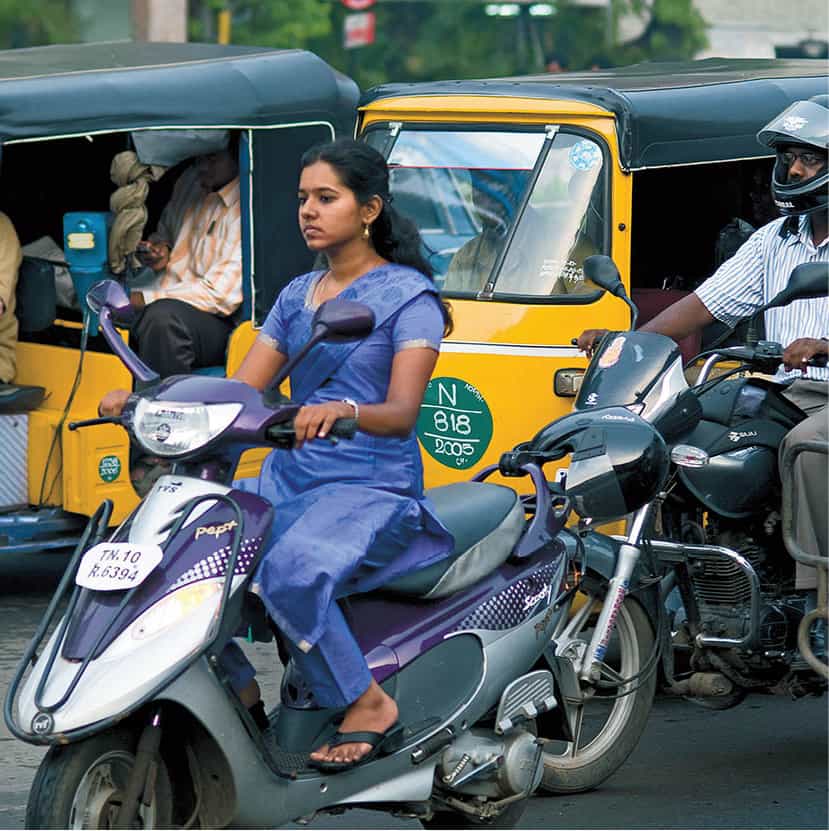
A commuter in Chennai.
Britta Jaschinski/Apa Publications
One of the most significant problems that stands in the way of Indian development is corruption, which is well entrenched at all levels of society. Despite the high profile of campaigns led by hunger striker Ana Hazare in 2011–12, it is hard to see this disappearing in a country where so much depends on favours and connections, and where members of parliament can continue to hold their seat even if they are convicted of a crime and sent to prison.
Literacy
One in three of the world’s illiterate people live in India; a staggering number, and a trend that looks set to continue. Only around 48 percent of girls are enrolled in primary education, and for these there is a 10 percent drop-out rate. According to the government, overall literacy is at about 74 percent. However, the government measure is set very low, with many people being functionally illiterate. Kerala has the highest literacy rate at around 94 percent, Bihar the lowest at 63. Investment in education and campaigns to promote literacy by the Keralan government, as against widespread corruption in Bihar, account for the disparity.
The middle class and the poor
While caste has traditionally been the dominant organising principle of Indian society, as the country begins to go through what appears to be a period of considerable change, other structures of social organisation are emerging that run both in parallel with and across caste boundaries. At the heart of this change lies the Indian middle class.
This hard-to-quantify group continues to receive a huge amount of attention in the Western press, blamed for, amongst other things – due to its increasing consumption of material goods – world food shortages and the increase in the demand for oil. Untangling the myth from the reality can be difficult. While there is no absolute measure of who exactly comprise the Indian middle class (a very broad category that covers a wide range of people, including larger rural landowners, civil servants, managers and the super-rich), the best guesses seem to be around 250 million people, or just over 20 percent of the population. From this is it possible to calculate a breakdown by class for the rest of the India’s many people.
While India’s super-rich indulge themselves in buying teams in the flashy Indian Premier League cricket competition, many of their compatriots are still sleeping on the streets or dying of malnutrition.
Around one third of India’s 1.3 billion people live below the country’s official poverty line. This equates to more impoverished people in absolute terms than exist in all of sub-Saharan Africa.
It is not surprising, then, that many – especially children – still suffer from malnutrition, while the country as a whole is a net exporter of food. In addition, India has a comparable infant mortality rate to neighbouring – and much poorer – Bangladesh. Sanitation is an ongoing concern, with much of the rural population still not having access to potable water supplies. Little has been done for this desperate group, as economic policies have tended to concentrate on either large-scale state-owned enterprises or, in recent years, economic liberalisation and the expansion of a consuming class.
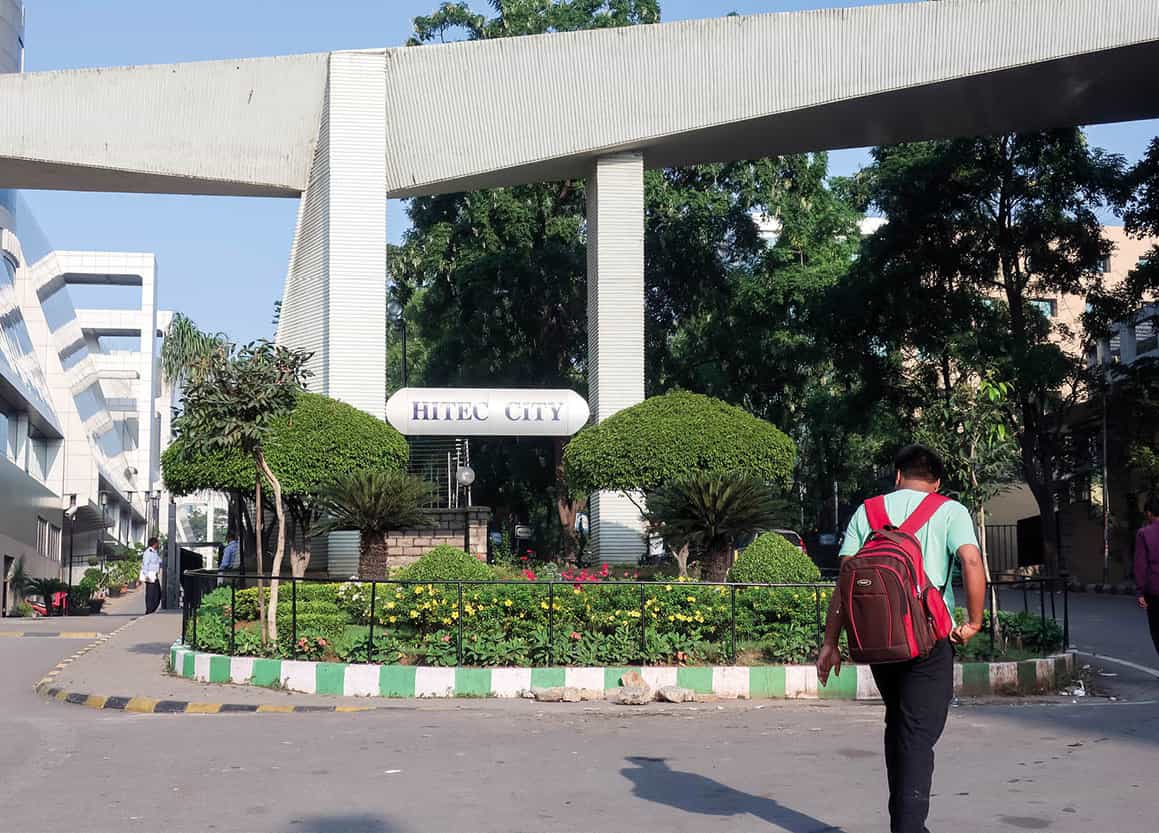
The new India: Hyderabad’s ‘Cyber City’.
iStock
Many of those living below the World Bank definition of a poverty line might be classed as ‘employed’, but underemployment remains a serious issue. These include railway workers, factory workers, small landowners and tenant farmers amongst others; while their lives are not as desperate as those who can barely survive, they too have yet to see any real improvement in their lives from India’s recent economic progress. Indeed, in rural areas many small-scale famers have been facing ruin through crop failures and debt.
Other indicators of public well-being do nothing to brighten the gloomy picture. According to the UN, less than 50 percent of the population have access to essential drugs and there is a chronic shortage of health facilities (in rural India there are only 50 hospital beds per 100,000 people; in the UK there are around 390).
All statistics relating to India should be seen as rough estimates; the concept of a national census in a country of this size and complexity is mind-boggling at best.
Only 30 percent of people have access to adequate sanitation, and according to the UN, as many as 2.1 million children die before the age of 5 every year – that’s one every four minutes – because of malnutrition.
Child labour also continues. While the government figures assert that there are around 20 million child labourers in India, NGOs, including the International Labour Organization, insist the true figure is probably closer to 60 million (with some estimates ranging upwards of 100 million). A huge amount of these are ‘bonded’, effectively a form of slavery.
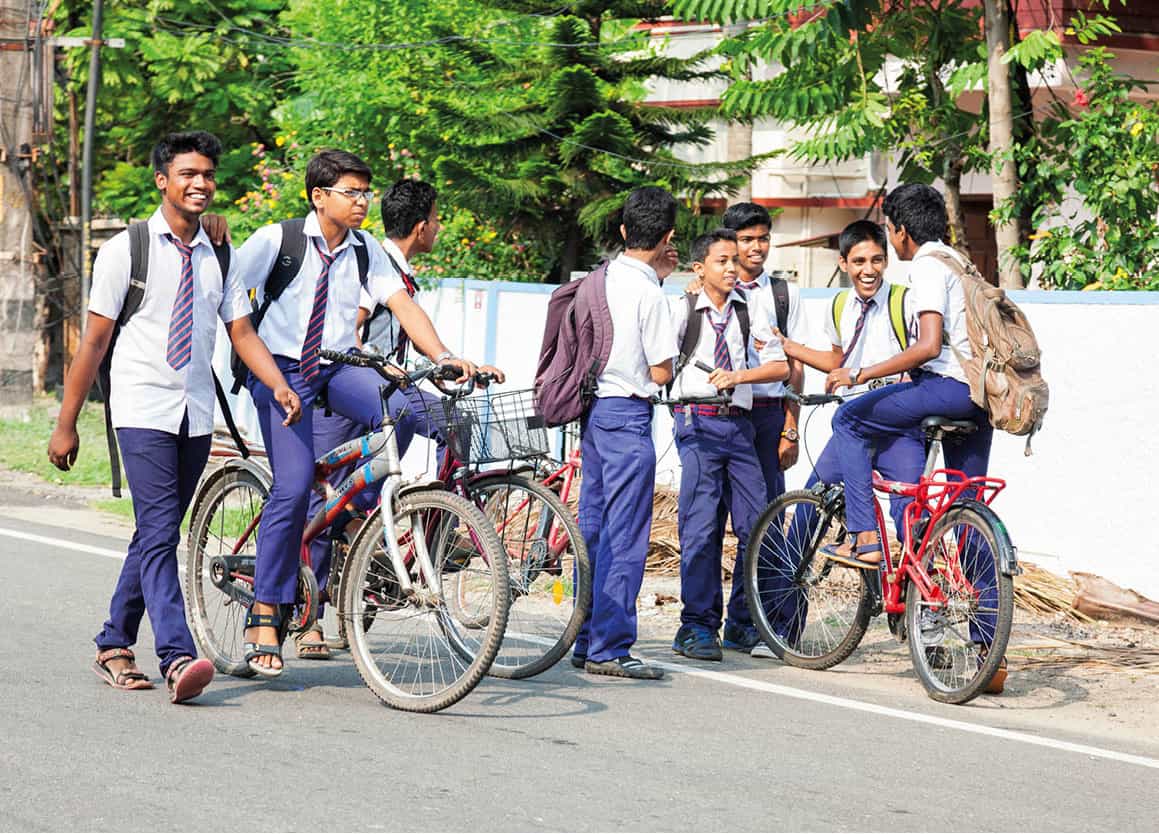
Schoolboys in Kerala.
iStock
The government has embarked on creating a series of ‘special economic zones’ (SEZs) as an incentive for investment. This has entailed a huge land grab, with millions being displaced with little or no compensation. In 2007, in supposedly communist-run West Bengal, villagers in Nandigram protested against the allocation of their lands to form an SEZ for a chemical company. The state’s ruling Communist Party of India (Marxist) sent in the police and cadres from the party to break up the demonstration, resulting in the deaths of up to 50 villagers. There were reports of rape and torture to break the resistance, and at least 3,500 people were forcibly displaced. In this case the state government came under intense scrutiny and pressure and the project was moved to another area. However, people continue to lose their lands and homes as the policy is followed across the country.
As elsewhere, cars are a sign of wealth and status in India, but although it might not seem so from the polluted and congested roads, only 22 people per thousand actually own one (as opposed to 526 in the UK, or 809 in the US). This, however, marks a sharp rise from only 15 per thousand a few years ago.
A sign of India’s recent advance into the ranks of technologically advanced nations can be seen in its space program. An unmanned moon mission launched in 2008, followed by the Mars Orbiter in 2013.
The ‘creamy layer’
Those who are left at the top of the pile are the middle class, known in India as the ‘creamy layer’. By no means a homogeneous grouping, they are best identified by their ability to consume, and this increasingly means desirable Western consumer goods. The bulk of the Indian middle class is made up of those who have traditionally occupied the role. These include lower-level civil servants, shop owners and larger farmers. They might have a small car, or almost certainly a ‘two-wheeler’ (motorbike or scooter), and basic consumer items such as a fridge and a TV. This group has tended to retain traditional ways of thinking and dressing but has seen its capacity to consume increase.
Those most visible on the streets of the large cities are the aspiring young. It is these educated 20- and 30-year-olds who present the glamorous face of contemporary India. They work in service industries such as IT, PR or in call centres, earning around 10,000 rupees upwards per month. They dress fashionably, shopping in new air-conditioned malls, own cars and two-wheelers and drink and smoke in chic bars.
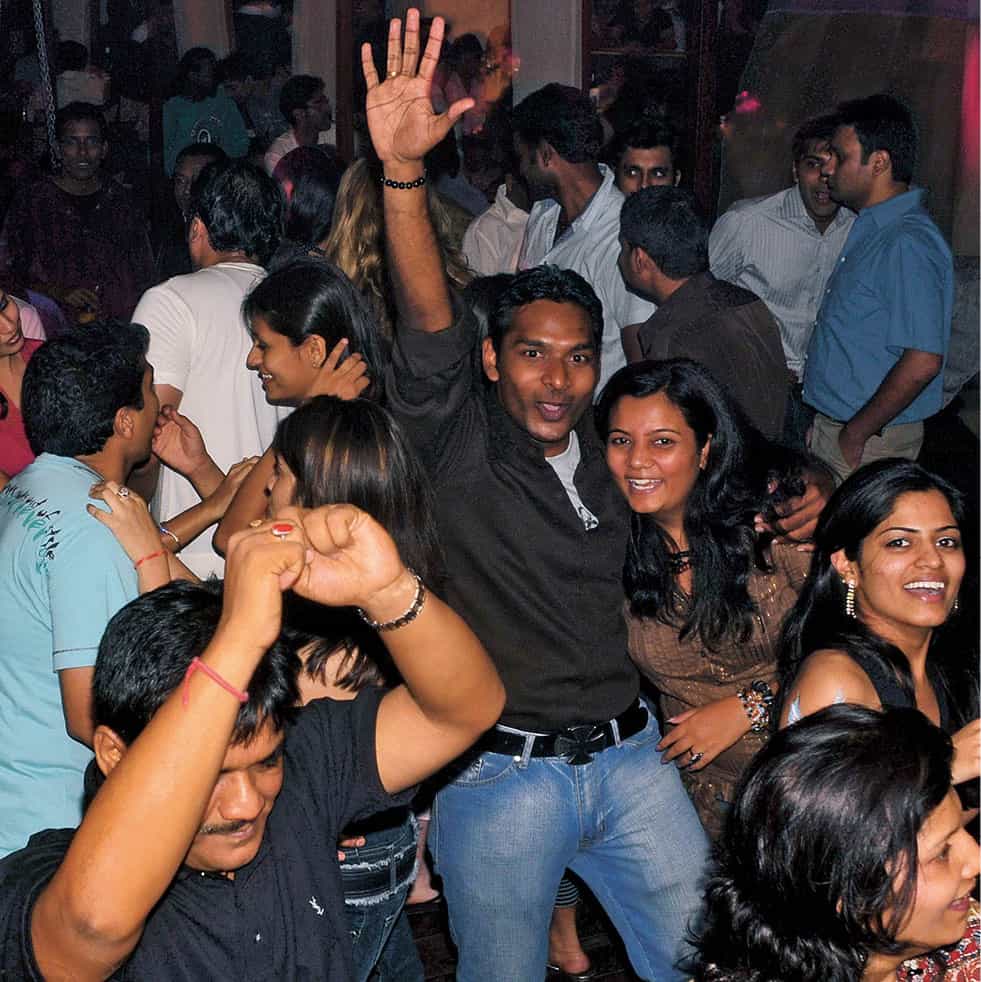
At the Taj Hotel Club in Hyderabad.
Britta Jaschinski/Apa Publications
However, not all is what it seems: for all their apparent modern worldliness, the vast majority of this group follows traditional paths: they are likely to live at home with their parents, and follow their wishes in whom they will marry, and much of their consumption is based on credit (now easily available in India). Most people in this income bracket who own a car or other expensive items calculate their monthly salary as a system of units, a certain number of which are already spent (through paying off loans on items or for cash) before they actually get the cash in their hands. This represents a large social shift, with the middle class traditionally having been wary of debt and now, to a certain extent, selling off the family silver to finance their new lifestyles.
At the very top of the heap are the policy-makers: top managers, politicians and civil servants, who can comfortably afford their large houses and cars. These are eclipsed by an even more select few, the super-rich. These industrialists and film stars are some of the wealthiest people on the planet, such as the chairman of Reliance Industries, Mukesh Ambani, pharmaceuticals mogul Dilip Shanghvi and Azim Premiji, chairman of software giant Wipro Limited.
The political challenge
The greatest challenge facing India’s politicians is to reduce the gap between rich and poor, and in so doing, stave off social unrest (already rife in some parts of the country, particularly the ‘Naxalite belt’ of Central India) in the face of such startling inequalities.
On current showing, this is not something with which they are having much success. The UPA government’s rural job-guarantee scheme (promising 100 days’ paid work to all workers in rural areas) was lauded as a huge step forward when launched in 2006, but has been beset with problems – not the least of which is corruption.
The major parties, however, may be facing the results of their decades of inaction as regional low-caste parties continue to gather support. Currently the most prominent of these is the Bahujan Samaj Party (BSP), whose president, the charismatic Dalit spokeswoman, Mayawati, served as chief minister of India’s most populous state, Uttar Pradesh until 2012. Her coalition of the low castes, Muslims and impoverished Brahman families remains a potent force in Indian politics, with a power base spreading across neighbouring states. Mayawati sat in the Upper House of the Indian parliament, the Rajya Sabha, until 2017 and is tipped by many of her followers to become India’s first Dalit prime minister.
The temple and the bomb
Alongside the socialist policies put forward after Independence by leaders such as Nehru, secularisation and, to borrow a government slogan of the time, ‘unity through diversity’ were also encouraged. These liberal ideas, however, have been under attack since the inception of modern India. While a disturbing political phenomenon of recent years has been the rise of the chauvinistic religious right, the movement’s roots lie much further back in the country’s political history.
This rise of the religious right has been dubbed ‘saffronisation’ after the colour associated with high-caste Hinduism, and its moment of arrival, and defining point in modern Indian history, was seen by many as the destruction of the Babri Masjid (mosque) in Ayodhya in 1992. This was the culmination of a process leading back to the Independence struggle.
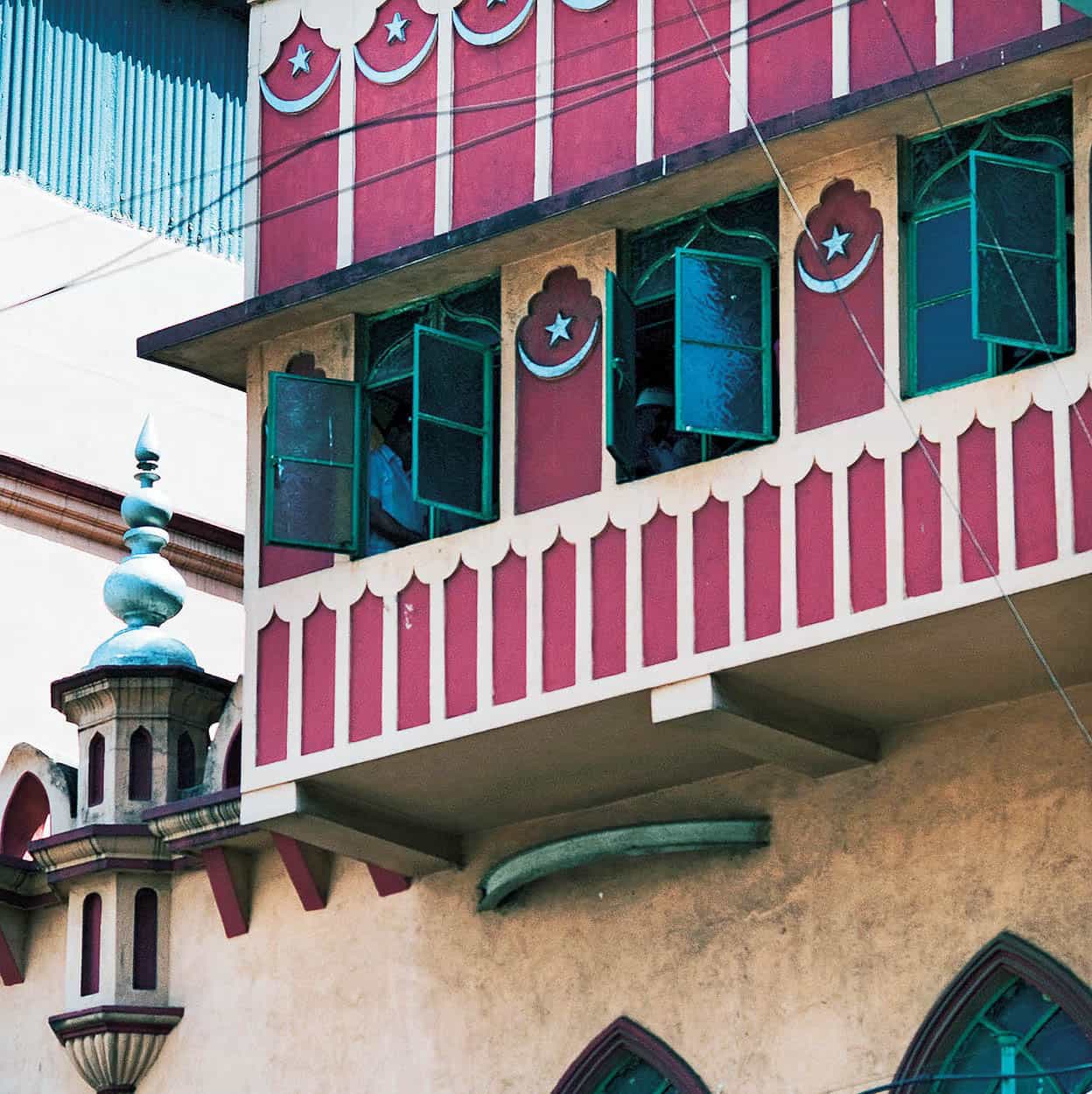
Worshippers at a Kolkata mosque.
Britta Jaschinski/Apa Publications
Anti-Muslim riots at Partition saw the prominent Congressmen Sardar Vallabhai Patel, India’s first Home Minister, and Rajendra Prasad call for the withdrawal of protection for Muslim citizens and the sacking of Muslim civil servants. However, the cause of Hindu nationalism suffered a severe setback when Gandhi, who preached tolerance, was assassinated by Nathuram Ghose, a Marathi Brahman with links to the RSS (Rashtriya Swayamsevak Sangh, a hard-line Hindu nationalist organisation). This gave Nehru the chance to outlaw communalist organisations, thus burying the ambitions of the Hindu right for the next two decades.
It was Nehru’s daughter, Indira Gandhi, who next indulged in communal politics. Although she declared allegiance to the secular ideals of her father, she actively courted Hindu support by surrounding herself with Hindu holy men and being seen to participate in Hindu rituals, particularly after her defeat in 1977 by a coalition government, which included a fledgling BJP (Bharatiya Janata Party).
The flirtation of Congress with communal politics (not only Hindu but also, with more immediately disastrous consequences, Sikh separatism in the Punjab) broke the taboo that had existed since Mahatma Gandhi’s assassination, and the 1980s saw a steady rise in support for overtly communal parties, aided by disillusionment with the corruption-ridden Congress.
The main challenger was the BJP, led by veteran politician L.K. Advani (former leader of the right-wing opposition in the Lok Sabha), formed out of the Janata Party of the late 1970s and with close links to the RSS and Sangh Parivar (a collection of right-wing Hindu groups). They campaigned on a high-caste, right-wing agenda, espousing the ideal of Hindutva, a Hindu homeland.
The BJP got its first taste of power in 1989 as part of the coalition government of V.P. Singh. This did not last for long. Advani started to campaign for the destruction of the Babri Masjid, which Hindus were claiming was built on the site of Rama’s birthplace and of an earlier temple. He embarked on a country-wide yatra (pilgrimage) to raise support for the building of a new temple, culminating in a visit to the site at Ayodhya itself. Advani was arrested and the government fell. However, the campaign continued to gather support, and in 1992 hundreds of kar sevaks (Hindu volunteers) tore down the mosque. This led to some of the worst communal rioting India has ever seen, in which many Muslims and Hindus were killed, particularly in Mumbai. In 2002, Hindu extremist mobs in Gujarat killed and displaced thousands of Muslims in a frenzy of violence that erupted after a lethal fire started on a train of Hindu pilgrims. Numerous mosques and shrines were also destroyed, allegedly with the connivance of the BJP-led state government.
The BJP Chief Minister, and Indian Prime Minister since 2014, Narendra Modi, was himself implicated in the carnage, after accusations that he expressly held back police so that rioters could kill and loot. Importantly, these accusations were rebuffed in a subsequent government report. The darling of Gujarat’s business community, Modi continued to enjoy great popularity in his home state in the subsequent years, where he held the position of Chief Minister from 2001 to 2014. Having won convincingly the state elections of 2012, he was catapulted to the leadership of the BJP, which defeated a fractured and unpopular Congress-led coalition in the national elections of 2013–14. The BJP is currently India’s largest political party in terms of representation in Parliament and, with its 110 million members, arguably the largest political party in the world. In May 2014, Modi, the man much reviled by Indian liberals for his autocratic tendencies and connections with far-right Hindu organisations, became India’s prime minister. His premiership has largely been viewed as a positive one. At the time of writing in 2019, he was about to run for a second term as prime minister in the general election, due to be held in April/ May this year.
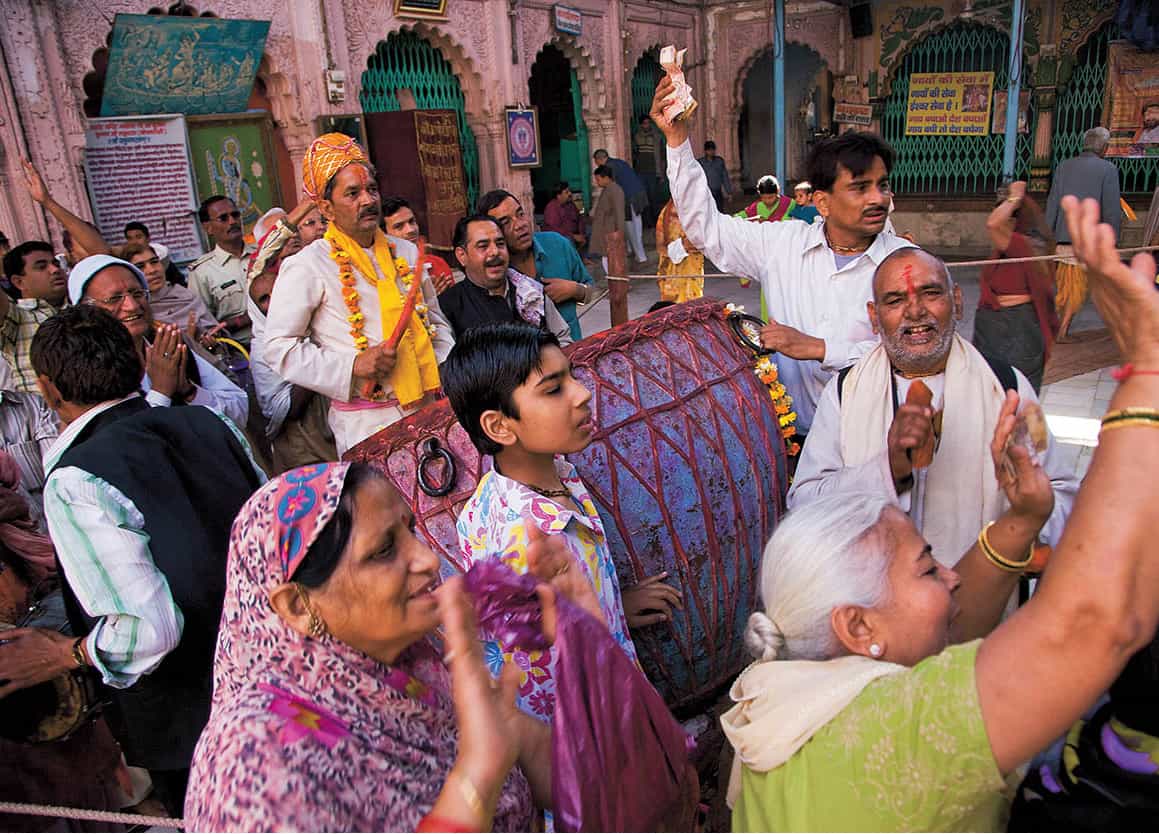
Hindus at Dwarkadhish Temple, Mathura.
Julian Love/Apa Publications
During its period in power between 1999 and 2004, BJP-led national government gave ‘saffronisation’ momentum. Religious minorities came under attack, and schoolbooks were rewritten glorifying India’s mythological ‘Aryan’ past, describing kar sevaks as heroes and vilifying Islamic contributions to society. Long after the fall of the BJP-led government, attacks against Dalits and Muslims have continued, and Christians, too, have been set upon by Hindu militants – as in Odisha (Orissa) in 2008. The unholy alliance between reactionary, right-wing Hinduism as espoused by the BJP and economic liberalisation remained in opposition after the elections of 2009, which were a triumph for Congress, but since winning the 2013–14 national elections they have dominated the national government again.
Although at first neo-liberalism and a fantastical reworking of the religious past seem strange bedfellows, given the disruption neo-liberal policies cause to people’s lives, religion and an aggressive promotion of the national myth are useful tools for keeping the populace onside while state and national governments push through unpopular measures.
In an Indian context this saw an individualisation of Hindu identity, while at the same time there was an attempt to homogenise a highly disparate and eclectic group of beliefs and practices. Modern Hinduism, at least as promoted by the Sangh Parivar, is increasingly coming to resemble evangelical Christianity. An individual’s relationship with a deity and personal observance of ritual, rather than action for the social good, are seen as the key to salvation. Thus, limiting consumption and displays of wealth in the face of deprivation is of less spiritual importance than, say, taking part in the building of a new temple to Ram at Ayodhya.
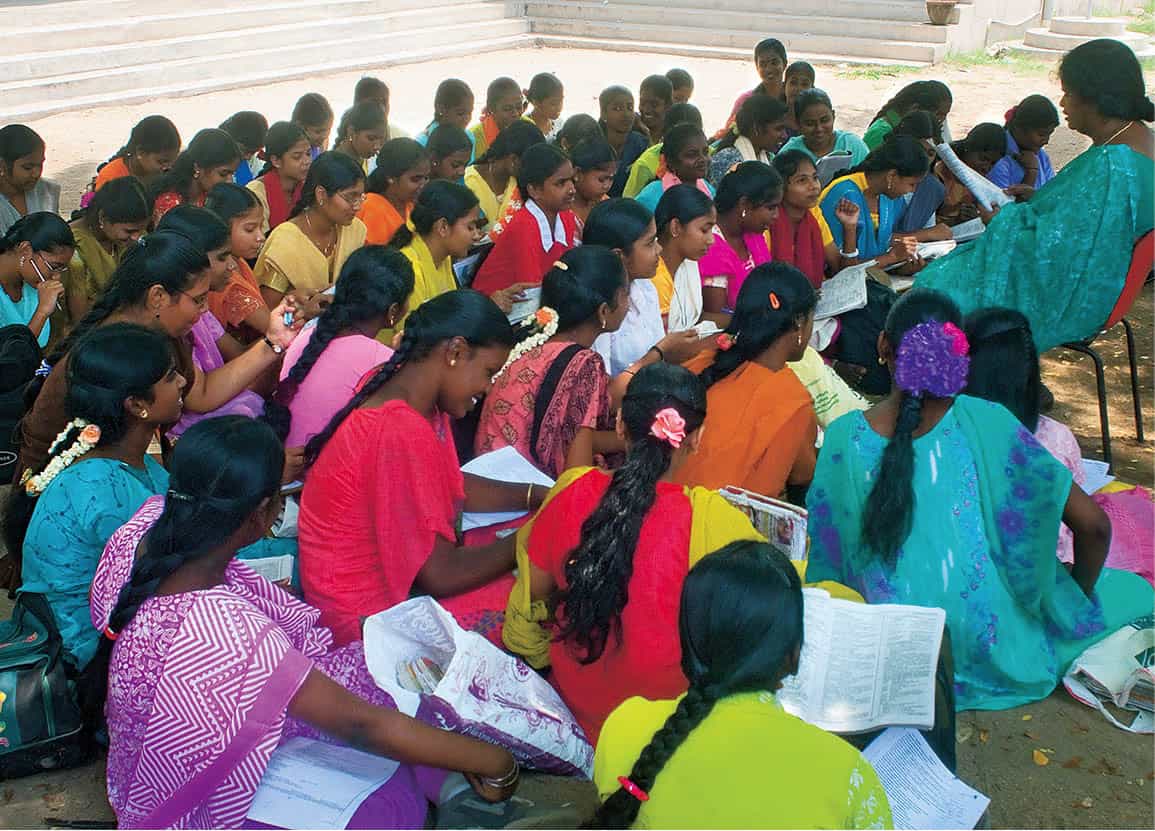
Schoolchildren listen carefully at a school in Kerala.
Britta Jaschinski/Apa Publications
This move away from Gandhian ideals has been accompanied by a more canonical approach to the religious texts. Writings such as the Vedas, Bhagavad Gita and Ramayana have acquired the status of historical document rather than spiritual tract; they are statements of absolute fact, rather than guides towards universal truths that are open to interpretation. Modern right-wing Hinduism is far more interested in having a rigid rule book of rights and wrongs than in the traditional subtleties of religious debate, which in the past made the Hindu world relatively inclusive and tolerant.
As with any insistence on the observance of a series of rules, minority viewpoints have suffered. In India this has had the most noticeable effect on the country’s 100 million-plus Muslims. The national myth promoted by the BJP is fiercely anti-Islamic. For all the recent peace talks between the two countries, the external bogeyman has been largely identified as Pakistan, something reinforced by the murderous terrorist attacks in Mumbai in 2008.
All this was brought into sharp relief in 1998, when India tested a series of nuclear devices at Pokhran in the Thar Desert, followed only 15 days later by an announcement from rival Pakistan that it too had successfully tested long range nuclear missiles. India, never a signatory of the Nuclear Test Ban Treaty, became a nuclear rogue state watched nervously each time tensions rose on the Line of Control separating Indian and Pakistan-controlled Kashmir.
Gaining a nuclear arsenal was integral to India’s desire to become a major player on the world stage. It has ambitions to have a permanent seat at the UN Security Council and wields considerable clout in climate-change talks. Geopolitically, India is now being courted by the US, which sees it as a strategic bulwark against the rising power of China. To this end, the US has proposed a nuclear cooperation deal that would unilaterally bring India in from the cold. Highly controversial, it is seen by many nations as fatally undermining the Nuclear Test Ban Treaty and has even been problematic on the domestic front. In 2008 the UPA government faced (and won) a vote of no-confidence when the Left parties, in this case supported by the opposition BJP, withdrew their support, fearing undue US interference in India’s internal affairs. The deal was finally approved by the US Congress in October 2008, but continues to be contentious; in July 2009 India identified two sites on which US nuclear reactors could be built, but an August 2010 nuclear liability law passed by the Indian government has further stymied progress. As of 2019 the agreement had not yet been fully implemented, with America’s plans to withdraw from the Nuclear Arms Treaty adding extra uncertainty into the mix.
Gender issues
Womens’ rights have crept up the political agenda in India, especially in the last few years. A huge outpouring of anger, both national and international, followed the news in December 2012 that a young female medical student had been gang raped on a moving bus in the city. Her subsequent death from injuries sustained in the attack, and mass demonstrations across the country at India’s seeming inability to transform traditional attitudes to gender, prompted a fervent national debate and has raised the coverage of subsequent attacks, as well as begun to improve the seriousness with which rape is regarded by the country’s law enforcers.
But there is, of course, a long way to go before entrenched attitudes are improved. The dowry system is still thriving, and payments can reach into many hundreds of thousands of rupees. Inheritance and property rights are another area in which women are heavily discriminated against, and, as the country remains in thrall to traditional social roles, women face discrimination in the workplace, not least in terms of the salary they can expect to earn.
The rate of female infanticide increases in proportion with wealth. Haryana, one of richest regions in the country, has only 857 girls per thousand boys – the worst child sex ratio in India.
Greater wealth for the middle class has not necessarily led to positive social changes for women. The problem of female infanticide is on the increase, with some areas of the country now showing figures of fewer than 850 girls to every 1,000 boys. Some of the worst districts are in wealthy regions such as the Punjab, Haryana and Gujarat. Ironically, rising standards of living have increased the availability of foetal ultrasound screening and abortion to families. With an ongoing social and economic prejudice against having daughters, the gap in the male-female population ratio has increased. Overall in India there are about 40 million fewer women than men, and the overall female-to-male birth ratio has fallen to around 914 girls to every 1,000 boys, with the trend getting worse, especially in the north.
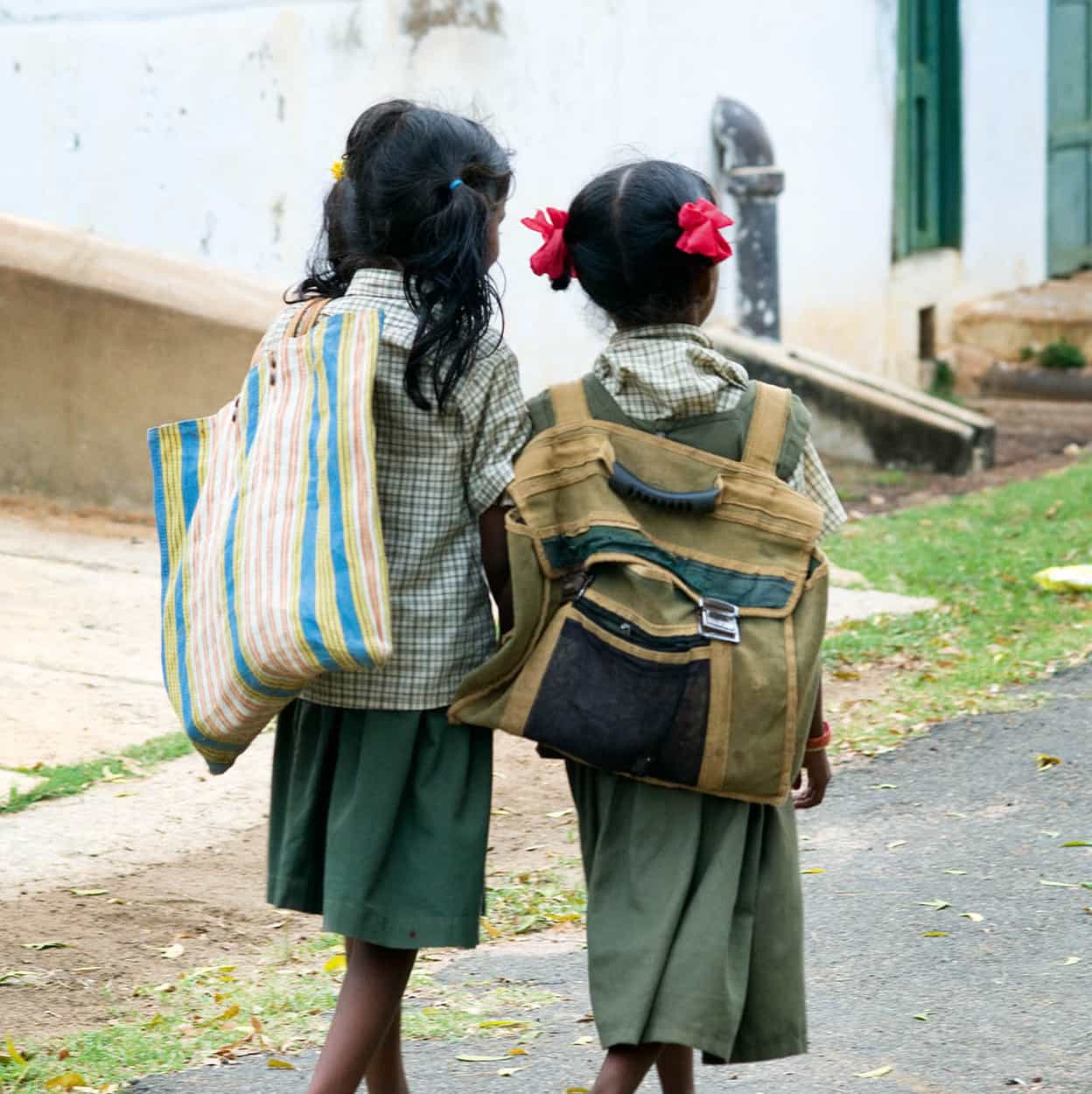
Walking home from school in Chettinad, Tamil Nadu.
Britta Jaschinski/Apa Publications
As the lower castes begin to adopt the social mores of the rich and wealthy, aping their aspirational lifestyles, they are beginning to embrace the dowry system on a scale never seen before. So far from dying out (it is technically illegal), the system is becoming more widespread, and the demands on the bride’s family are increasing to a ridiculous extent (asking for cars, foreign holidays and houses). This in turn puts even greater pressure on couples to produce a son, and as the practice of giving dowries spreads across the social spectrum, the fear is that there will be an even greater increase in the abortion of female foetuses and female infanticide.
On the other hand, it is true that in New Delhi, Mumbai and Bengaluru amongst other cities, young women are leading relatively free and independent lives, and wearing clothes that would not long ago have been considered ‘immodest’. As with many things, middle-class women, with their access to education and health care, have seen their prospects and freedoms open up, while poorer women concern themselves with the struggle for survival. The vast majority of women all over India are still restricted to the domestic sphere.